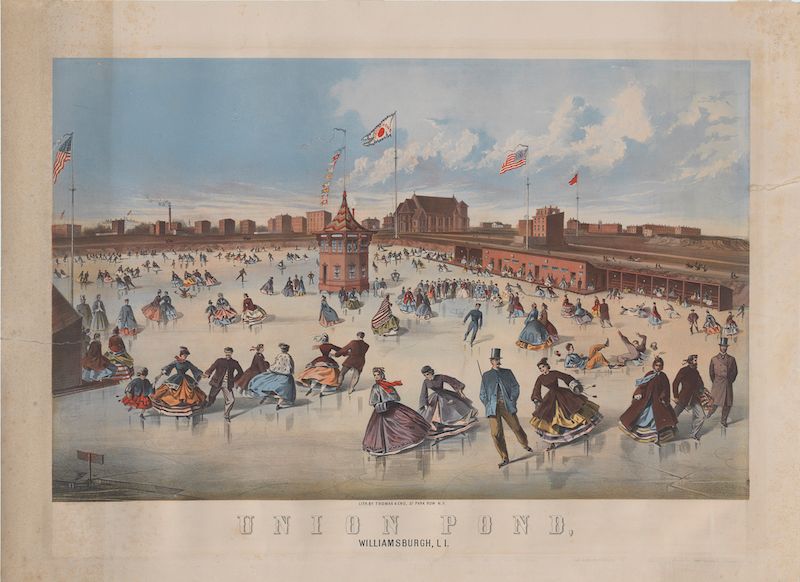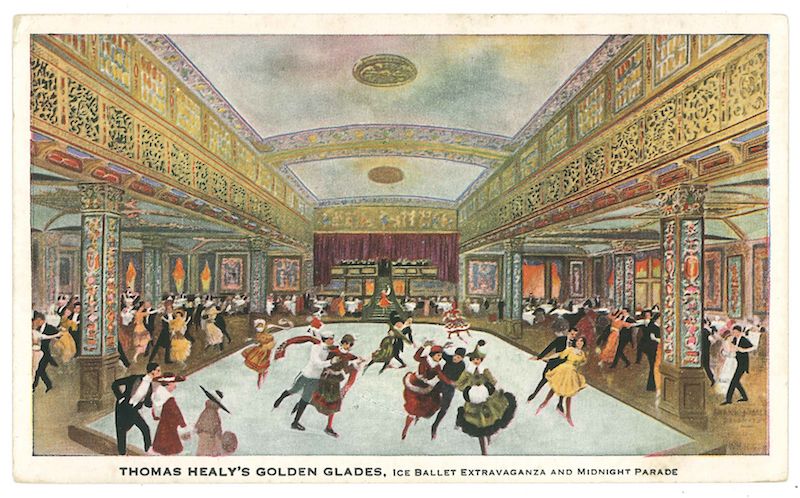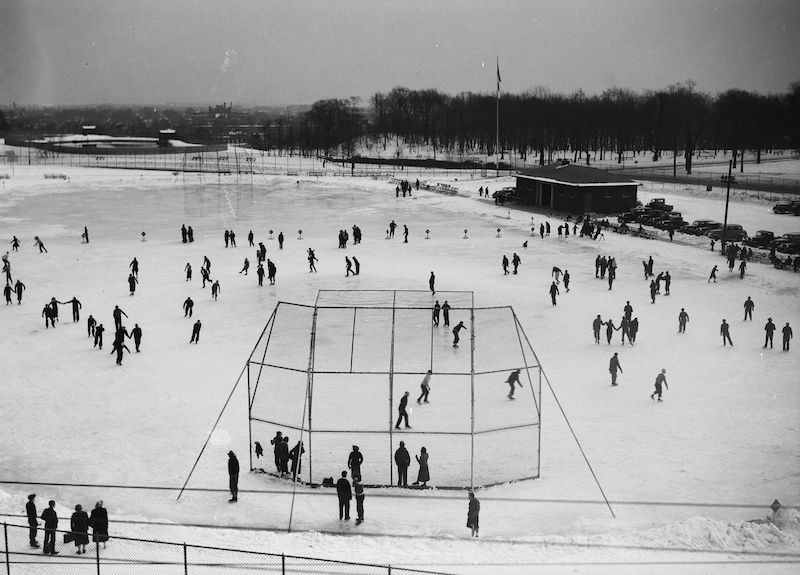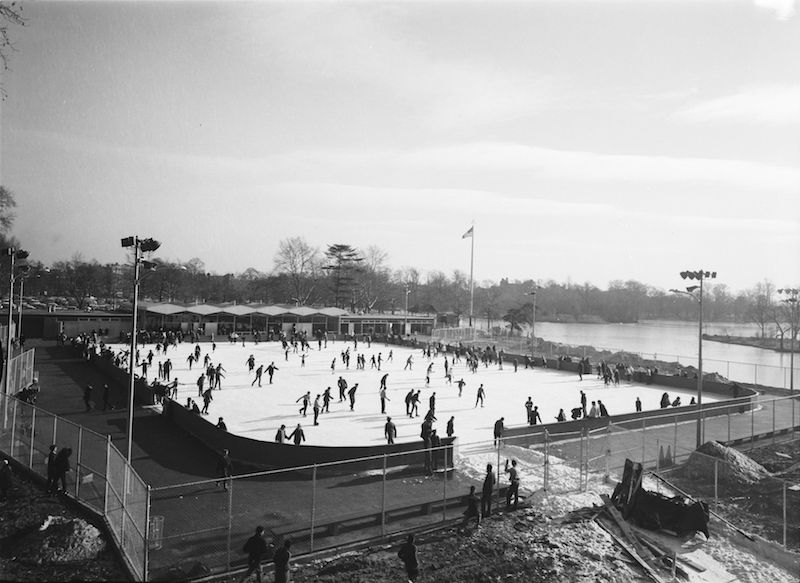Last-Minute NYC Holiday Gift Guide 🎁
We’ve created a holiday gift guide with presents for the intrepid New Yorker that should arrive just in time—



Major & Knapp Engraving, Manufacturing & Lithographic Co., printer Empire City Skating Rink, ca. 1868. Color lithograph. Museum of the City of New York, The J. Clarence Davies Collection, 2 9.100.1544
Ice skating is New York City’s favorite wintertime activity. The crowds at Rockefeller Center and Bryant Park swell over the holiday season and continue to through even the coldest of days. But wintertime skating is not just a fascination of the present. New York on Ice: Skating in the City, a new exhibition at the Museum of the City of New York curated by Frances Rosenfeld, opening Wednesday, December 20, digs into New York’s ice skating past, tracing its evolution from 19th-century craze, to the elaborate spectacle, commercialized leisure activity, and competitive sport through the 20th century and beyond.
The exhibition begins in the 1860s, when the ponds and lakes of Central Park and Brooklyn opened to the public for skating. Since then, the enjoyment people found on the ice would slowly turn into a craze as massive artificial ice rinks, tons of ponds, and flooded lots across the five boroughs significantly increasing the amount of ice surfaces for New Yorkers to enjoy in the early- to mid-20th century.

Thomas & Eno, lithographer Union Pond, Williamsburgh, L.I., ca. 1863. Lithograph with hand coloring. Museum of the City of New York, The J. Clarence Davies Collection, 3 4.100.264

John O’Brien Inman Moonlight Skating – Central Park – The Terrace and the Lake, ca. 1878. Oil on canvas. Museum of the City of New York, Anonymous Gift, 49.415.2
It moves in four sections: “New Yorkers Take To the Ice,” “City of Rinks,” “Skating for the People,” and “New York Ice Champions.” The first three sections reveal just how many rinks and ponds were available to people- far more than we have today. In the late 1930s though the 1940s, Robert Moses and the Parks Department would flood hundreds of tennis courts, baseball fields, and lots with enough water to freeze and become temporary ice rinks in almost every neighborhood.
Before the flooded lots, ponds peppered the city in places they have long since been squeezed out of. All along Fifth Avenue there were ponds like Mitchell’s Pond, where the Plaza Hotel now stands, and some that were the birthplace of members-only clubs like the Skating Club of New York, while others gave people of all social classes the opportunity to skate. What you’ll be most surprised to learn is how many indoor, artificial ice rinks the city had, particularly Manhattan. Massive ice houses that spanned blocks like the Empire City Skating Rink on the Upper East Side and the Brooklyn Ice Palace in today’s Crown Heights were grand skating institutions, making today’s interest in skating pale in comparison to that of the early 20th century.

Postcard of Thomas Healy’s Golden Glades, Ice Ballet Extravaganza and Midnight Parade, ca. 1916. Collection of Michael V. Susi
The little known secrets of New York City ice skating are revealed in the programs and images of the once elaborate, and now vanished, spectacles of the 1930s and 1940s that transformed the city’s nightlife and entertainment culture. Prominent hotels like the St. Regis and Hotel New Yorker would put on shows on their iced stages, while others like the Biltmore Hotel created terrace space for people to enjoy skating.

The Biltmore Ice Gardens, ca. 1915 Byron Co. Gelatin Silver Print. Museum of the City of New York, Byron Company Collection, 93.1.1.5968
The exhibition also delves into the sport’s continued role as a feat of athleticism to be watched and mesmerized by, represented by the inclusion of hockey, speed skating, and figure skating objects, including outfits from some of New York’s most famous figure skaters like Johnny Weir, Sarah Hughes, and Carol Heiss.
New York on Ice takes advantage of its smaller exhibition space, enveloping visitors in walls the color of warm hot chocolate, reminding us that it’s an activity to be loved and enjoyed, be it in Central Park or the Sky Rink at Chelsea Piers. It presents through a series of vintage photographs, posters, lithographs, paintings, and costumes the evolution of the sport and art, accompanied by a video featuring the city’s most famous skaters and a massive map detailing a sampling of over 100 rinks that have at some point been in New York, dating back to the 19th century.

Mayor John V. Lindsay and Commissioner Thomas Hoving at Lasker Rink and Pool, Central Park, 1966. Courtesy New York City Parks Photo Archive

Flooded ballpark with skaters, Central Park, 1938. Courtesy New York City Parks Photo Archive
Perhaps most importantly, New York on Ice recognizes skating not just a spectacle to be enjoyed as an audience member and not just a sport for the elite few who can throw triple jumps or sprint against an opposing team for an hour. It was at one time one of the most iconic ways to enjoy people’s company. As a quote by the Brooklyn Skating Association in 1868 emblazoned on the wall explains “Skating… is particularly suited to our republican ideas as a people. The millionaire and the mechanic, the lady of fashion and those of humble rank, all meet together to enjoy this fascinating and beautiful exercise.”

Skaters at Sara D. Roosevelt Park, 1935. Courtesy New York City Parks Photo Archive

Kate Wollman Memorial Rink at Prospect Park, 1961. Courtesy New York City Parks Photo Archive
Skating stretched as far as people did in the city to the likes we don’t see today, from Van Cortlandt Park in the Bronx, to the World Ice Arena in Flushing Queens, and Abe Stark Rink in Coney Island. And while the number of rinks in the city have certainly decreased (with not one in the Bronx), people still find themselves coming to Central Park, Rockefeller Center, and Bryant Park in the winter- a testament to the fact that New Yorkers’ love for skating will never really go away so long as there’s somewhere to skate.

Photographer unknown [Water pipes at Rockefeller Center skating rink.], 1936. Gelatin silver print. Museum of the City of New York, gift of Rockefeller Center, X2010.11.3975
New York on Ice will be open for viewing through April 15, 2018 at the Museum of the City of New York (1220 5th Avenue), and be sure to check out the programs planned in conjunction with the show. Should you want to go ice skating after walking through this exhibition as badly as we did, then Lasker Rink is just across the way from the Museum in Central Park.
For a full list of places to skate in New York, check out our 2017 NYC Ice Skating Guide.
Subscribe to our newsletter